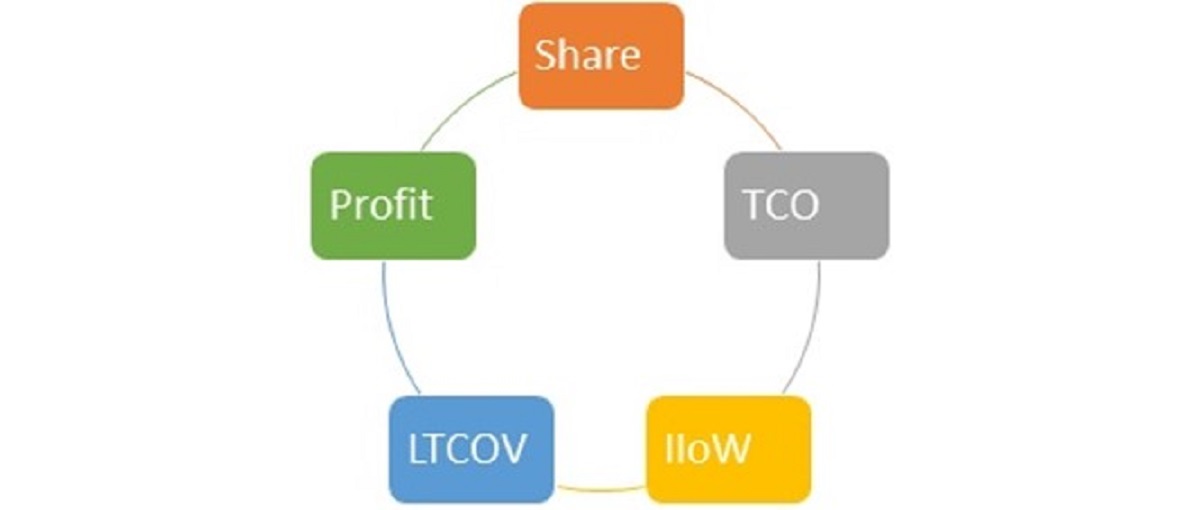
While the pharmaceutical industry is expanding with new product constantly emerging, it still needs innovations from filter suppliers. Here, Bob Mcilvaine, president, Mcilvaine Company argues that the innovation-total cost of ownership-profitability causation loop is the route to better products and higher profits.
The pharmaceutical industry is growing faster than other industry sectors. It is also changing. New drugs can treat diseases such as cancer without harming patients. The challenge is that the drugs utilize the cells from each patient to create a product which can be used only by that patient. Manufacturing these single patient drugs has challenged manufacturers. The quantities are small and it is very difficult to switch without contamination from the previous batch. The product is both very expensive and vulnerable to damage. this has created a demand for single use filters.
Filter suppliers need to develop products to meet the new needs. Then they need to communicate the advantages. Fortunately, there is what could be termed an Industrial Internet of Wisdom which includes conferences, magazines, journals, books, and blogs. One of biggest contributions is to establish total cost of ownership (TCO) factors.
This data is available online and contributes to the IIOW. ‘Pharmaceutical plant selects QUA EnviQ ultrafiltration membranes for MBR system’ first published in the January 2019 issue of ‘Membrane Technology’ and covers the use of UF flat sheet membranes which are successfully used in a large vaccine manufacturing plant in India.
TCO cost factors include:
- Lower cost of installation relative the small space requirements and limited space available
- Lower maintenance due to ruggedness of flat sheet membranes
- Lower cost to meet the high BOD of 50 mg/l
- Lower cost to achieve the high efficiency requirements
MBBR and IFAS cost considerations The design and engineering of MBBR and IFAS wastewater treatment plants is full of obstacles and mistakes which can be hard to remedy. This article explains the steps that should be taken by qualified biotechnologists to implement MBBR and IFAS systems.
TCO cost factors include:
- Need to relate cost to the quantity of biomass immobilized/ volumetric unit of carriers. The article can be found here.
- Need for IIOW is very substantial when it comes to single use filters. Filtration + Separation magazine started following this development as early as 2010. An extensive article analyzed the advantages of eliminating cross contamination.
The trend has accelerated in the last decade and there are many new ramifications. The total cost of ownership versus permanent filters which require expensive cleaning needs constant review.
If you search under “single use” in the Filtration+Separation website search engine filtsep.com you are provided with several links. Much of this information is relevant to current cost analyses. The problem is that the purchaser is not likely to spend the time to extract all the valuable information. This is a task which the suppliers and consultants can take on. When the information from online sources are incorporated along with other resources you have an internet of wisdom and the opportunity for the purchaser to make the better rather than most popular choice.
In the past the leader with many successful installations could use his large market share to validate his equipment. The argument has been if all these users are finding it the best so will a new purchaser. Market leaders such as Meissner, Pall, and Sartorius to their credit have not followed the path of IBM and Kodak, but have aggressively pursued single use technology.
The media, suppliers, and associations are providing instant access to the latest information. In effect this is an Industrial Internet of Wisdom (IIOW) which allows the user to determine which product has the lowest total cost of ownership.
What is being created is an Innovation – TCO, i.e. a profitability causation loop consisting of:
- Market share
- Total cost of ownership (TCO) for the innovation
- Industrial internet of wisdom (IIOW)
- Lowest total cost of ownership validation (LTCOV)
- Profit margin and total profits
The TCO for the innovation can now be validated with IIOW. LTCOV convinces the customer to pay a higher price for the product (Figure 1). In turn the higher price results in higher profits. Funds are then available for more R&D This investment leads to new and better products and the cycle continues
The pharmaceutical industry is the leader with R&D expenditures averaging 19% of revenues. The filter industry averages 3%. Filter suppliers need to keep pace with their pharma customers. The innovation-TCO- profitability causation loop is the recommended route.



